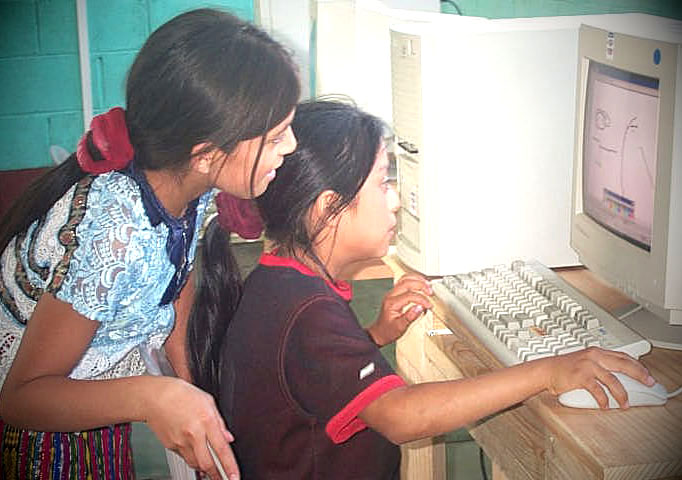At IBM, we strive to lead in the creation, development and manufacture of the industry's most advanced information technologies, including computer systems, software, networking systems, storage devices and microelectronics. We translate these advanced technologies into value for our customers through our professional solutions and services business worldwide.
At IBM, we also know that being a company that matters in the world means stepping up to the truly important problems we face as people. Our primary social commitment to the global community lies in our efforts to improve education. We know that no business can be successful without a successful community, and no community can be successful without high-quality schools.
Working in collaboration with teachers, administrators, and parents around the globe, IBM researchers from the award-winning T.J. Watson Research Laboratory have developed IBM Learning Village. IBM Learning Village is a Web-based communications and instructional tool that harnesses the power of the Internet – eliminating time and distance barriers and giving it the structure, substance and security that makes it meaningful to schools and students.
- Standards-based lesson planning.
Teachers are using IBM Learning Village's Instructional Planner application to create, share and search for standards-based, online lesson plans in core academic subjects, i.e. math, science, language arts and social studies. Teachers who develop lessons submit them – via IBM Learning Village – to a jury of subject experts, who rigorously review the plans. These lessons become part of a databank that other teachers can use in their classrooms as a way of sharing effective practices. - Assessing student work.
Using IBM Learning Village's Authentic Assessment Tool, teachers receive training in portfolio assessment by practicing with pre-scored student work. When judging their own students' work, reference materials – in the form of assessment criteria (or rubrics) and performance objectives (or benchmarks) – are placed at the fingertips of teachers. The tool also provides summary profiles of student performance so teachers can understand the academic strengths and weaknesses of an individual student, as well as an entire class, and respond appropriately. - Bridging the gap between home, school and community.
Using IBM Learning Village, parents – from homes, community centers, libraries – are examining their children's assignments online, engaging in private conferences with their children's teachers, and accessing school calendars that detail classroom activities, school events, and lunch menus. Teachers have created their own homepages to communicate classroom information to parents. Students are using the technology to collaborate on projects with students in other classes. Experts – from museum curators to business people – are using the technology to volunteer their expertise to teachers and students, without being hampered by time and distance barriers. - Enhancing Teacher Professional Development.
IBM Learning Village is being used to eliminate the isolation of the teacher in the classroom, by allowing teachers to share ideas, lesson plans, instructional practices, and strategies online. The technology also is providing critical follow-up support to teachers who have participated in classroom-based teacher training programs, by linking teachers' classrooms online for ongoing communication.
In addition, a Teacher Portfolio Tool has been developed to enable teachers to incorporate technology and new teaching methods into their instruction. Built around a set of teacher standards that articulate the skills teachers need to progress from "emerging" to "exemplary," the tool provides teachers with guidance and instruction on activities to reach and demonstrate these standards. Because reflection and collaboration are critical components of professional development, the tool enables teachers to collect, document and keep a personal journal of their progress.
IBM Learning Village is in use in sites around the United States, and customized versions in Spanish are now being implemented in Mexico, while a Portuguese version is being used in the State of Rio de Janeiro in Brazil. Additional international sites include Ireland, Italy, the United Kingdom, Singapore, and Australia.
Since May 2000, the Ministry of Education for the State of Mexico has been implementing IBM Learning Village to complement and improve its new teacher training initiative for elementary and secondary schools. The technology is facilitating both off- and online teacher professional development by providing an integrated set of communication and collaboration tools that overcome barriers associated with distance, time, and cost.
In Brazil, IBM Learning Village is supporting the professional development of teachers of biology, physics and chemistry – academic areas where there are a lack of teachers. IBM Learning Village is particularly critical in providing training to teachers whose schools are located in remote areas of the country. Teachers first participate in hands-on training and share teaching and learning experiences; IBM Learning Village provides teachers with the ability to communicate online for ongoing support and guidance.

